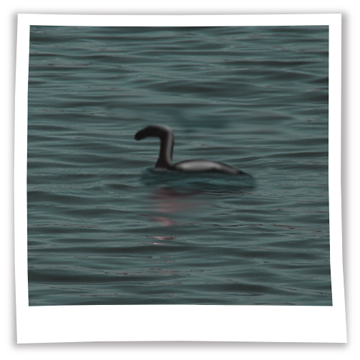The power of curiosity: What you can learn about business communications from the legend of the Loch Ness Monster
 Do you believe in the Loch Ness Monster? The answer to that
question has become an obsession for generations of people and an economic boon
to a remote Scottish community for the past 85 years.
Do you believe in the Loch Ness Monster? The answer to that
question has become an obsession for generations of people and an economic boon
to a remote Scottish community for the past 85 years.
The legend of the Loch Ness Monster found its inspiration in
1933. That’s when a newspaper article claimed that a couple driving along the
Scottish lake were surprised to find a 25 foot long creature slithering across
the road ahead of them. The leviathan had a long
neck that resembled an elephant’s trunk and small head. When they came upon it,
it was startled and made its way to the water and disappeared. Within the next
year, scores of people began to come forward with their story of encountering
the massive beast. People claimed to have photographed "Nessie” surfacing on
the water. In 1934, the mysterious Surgeon’s Photo (supposedly taken by a
London doctor named Robert Wilson) was published in the Daily Mail. It showed a
dark, shadowy figure that looked to be a neck and head of a sea serpent. Curiosity
was more than people could bear. They were obsessed with finding the surreptitious
beast and flocked to the region to hear the story and, with a little luck, be
the next person to lay eyes on the mysterious amphibious giant.
Curiosity is a writer’s best friend. Telling a story in an
intriguing way is very seductive to the human psyche. Something as far-fetched
as a sea serpent living in a lake in the Scottish Highlands can be so alluring
that people will travel for thousands of miles and spend millions of dollars to
gratify their curiosity (the annual economic impact of the Loch Ness Monster on
the local economy is reported to be around $34 million annually1). How much curiosity do you build into your
business communications? Obviously we cannot make up a story about an enormous
creature living under your office, but you can write in a way that creates
intrigue in your brand.
Let’s take a look at the places where corporate communications
have their greatest impact – web sites and social media. Too often these forms
of communication are written in a very sterile and boilerplate method. They are
carefully crafted to tell all the facts and try to answer every question.
However, I am a marketer. I don’t want a web page to answer all the questions.
I want a website to build enough fascination with a brand, but to leave
something unsaid that can only be answered by taking another step. We often
call this a call to action. That may be filling out a contact form, sending an
email, or making a phone call to get more information. I want a prospective
customer browsing my website to take another step because they are curious
about the product or service they are looking at.
How strong is curiosity? It is so alluring that people will
look past the truth to quench their desire to know more. I will tell you that
most of the sightings of the Loch Ness Monster have been refuted as either
outright fabrications or rebuffed as the misunderstandings of people who were
overly excited by what they thought was a sea creature, but was actually a
wave, a seal, or a log floating in the water. (The Surgeon’s Photo was later
declared a ruse by one of the men who perpetrated the hoax. He used a toy
submarine with a molding clay neck and head, which was pulled behind a boat to
create the illusion of the beast surfacing on the water.) That doesn’t seem to
matter to people who are curious about the legend of Nessie. They have been
traveling to the area for 85 years, and the fascination with the legend doesn’t
seem to be slowing down. In 2017, there were more reported sightings (8) of the
monster than in the past two decades.
Even if you don't believe in the Loch Ness Monster, you should believe in the allure of a curious story. Use curiosity to your advantage in your corporate
communications. It is a powerful tool to engage your target market.
_________________________
1. The Loch Ness monster: how did the myth begin? The Week, May 2, 2018
1933 Loch Ness Monster Sighted This Day in History: May 2, History.com